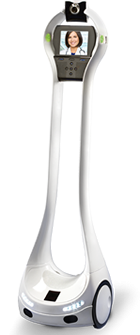Event Report: Evaluating opportunities for emerging technologies in healthcare markets
Last Friday at the British Consulate in Cambridge, three innovators described emerging technologies that are changing how and where healthcare is delivered–and the challenges of bringing those technologies to market.
Jacqueline Thong, CEO and Co-Founder of Ubiqi Health, in Boston, is developing mobile tools to track and use data on patient compliance. Bringing Ubiqui’s first product–which measures the impact of life style changes on migraine headache sufferers, to market–has been slow, Thong said, but over the course of 18 months, her company acquired 15 thousand users, developed a reporting system, and assessed results. While, originally, her company had expected reports on impact to be shared only with providers, her team found that patients were interested in knowing their results–and that when provided access, their compliance and positive outcomes increased.
Thong emphasized the emphasized the importance of measuring impact and showcasing findings to potential partners. Merck and the Joslin Diabetes Center are now interested in testing the device with their patients, as are other pharma companies, payor organizations interested in cutting costs, and physicians, Thong said.

Mira Sahney, General Manger, Gynecology Business at Smith & Nephew Endoscopy, is building a women’s health division at the company. She is in the process of commercializing a minimally invasive surgical tool for use in doctors offices that removes fibroids and polyps which have long been a leading cause of hysterectomies. While, in Europe, use of the minimally-invasive procedure (hysteroscopy) in doctors’ offices is encouraged and financially incentivized, introducing it to the US market has been challenging, she said.
Medicare reimburses differently depending on the location but in any case, will not pay for the procedure if performed in the doctor’s office. Getting FDA approval for a new product can take years, she said. “You need promoters.” “What is more, the American College of Gynecology is slow and conservative; private insurers can see and implement the benefits but are moving slowly. Anyone seeking to market a paradigm-shifting device must be prepared to work at the “micro” level, she emphasized. “commercialization is completely different in every market.”
Peter Vicars, President and CEO of VGo Communications, in Nashua, NH, emphasized the importance of focus in introducing a new product. His company has developed a “telepresence robot” that can moved around a space to provide video-like audiovisual information — by someone at a computer many miles away. Vgo robots can be used for security, advertising and in homes and schools, Vicars said.
 For example, a child with immune deficiency could not go to school, but by sending a robot in his place, he could observe the goings on and interact with students and classmates.
For example, a child with immune deficiency could not go to school, but by sending a robot in his place, he could observe the goings on and interact with students and classmates.
Robots are being used by families to communicate with patients in nursing homes–and are also used by health providers to monitor patients. For example, at a children’s hospital found that they had a 50% readmission rate–not because the doctors had done anything wrong but because parents tended to panic and bring their kids back to the hospital in case of the slightest worry. To cut back on expensive readmissions, one of the doctor now sends a Vgo robot home with every patient. He can then see what’s going on, thus making a virtual house call.
The possibilities seem endless, Vicars said, but it’s crucial to focus in order to determine “is there an opportunity and can you capitalize on it?”
The program was developed and moderated by Tanya Kanigan, Founder of Proof of Market, which helps engineering driven companies identify and develop opportunities for their technologies and services in life science and healthcare markets.
—Anita M. Harris








